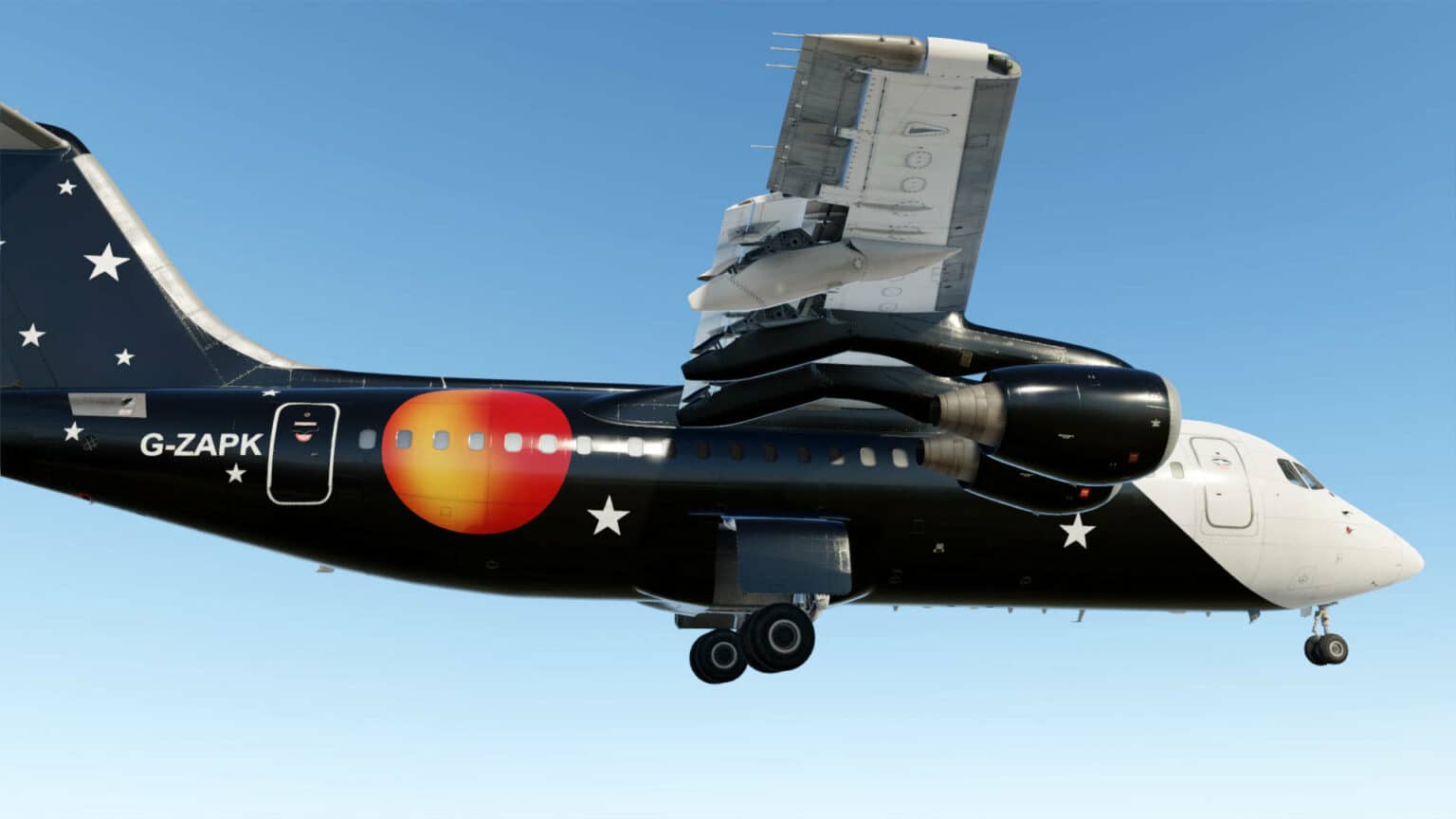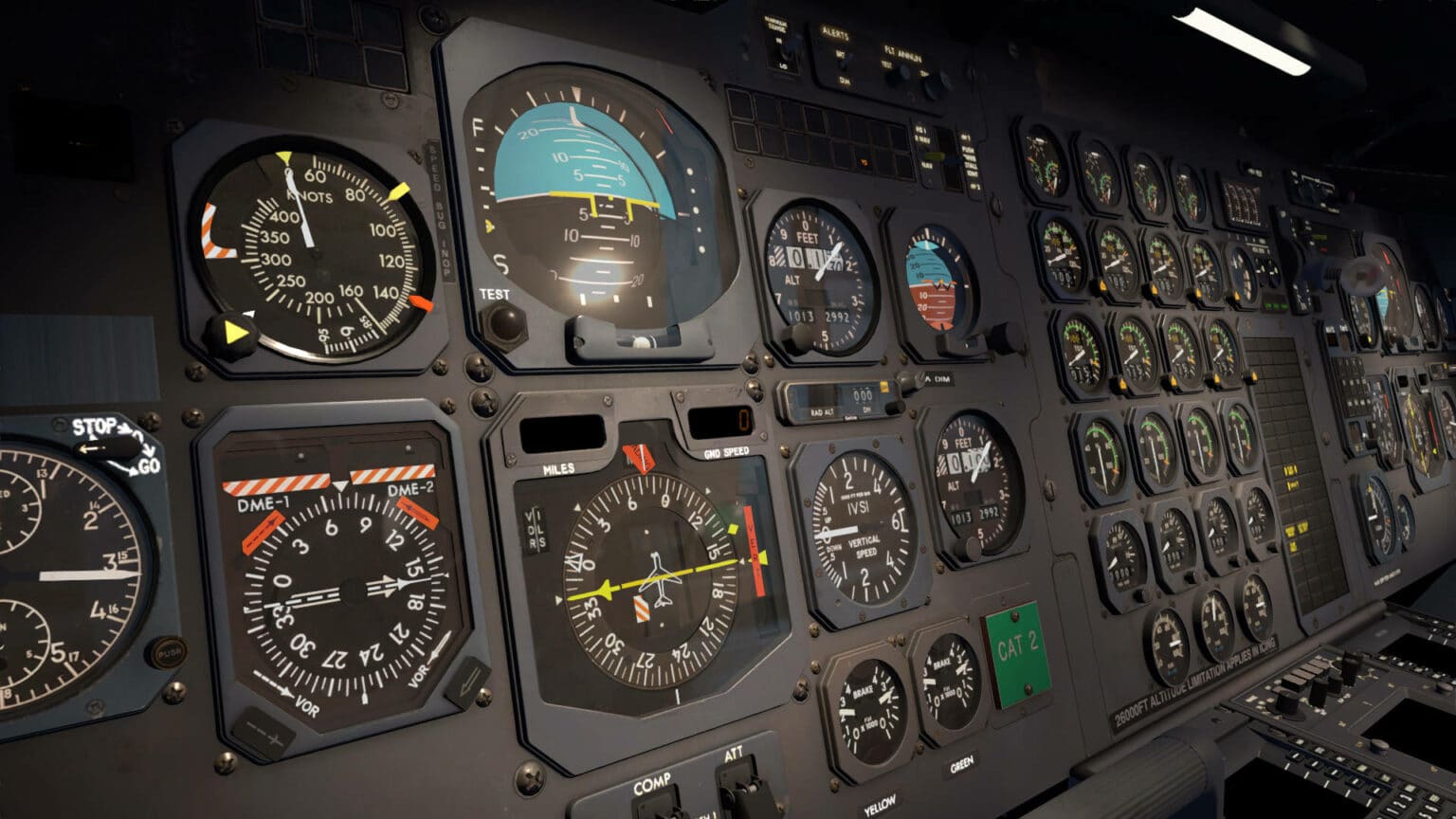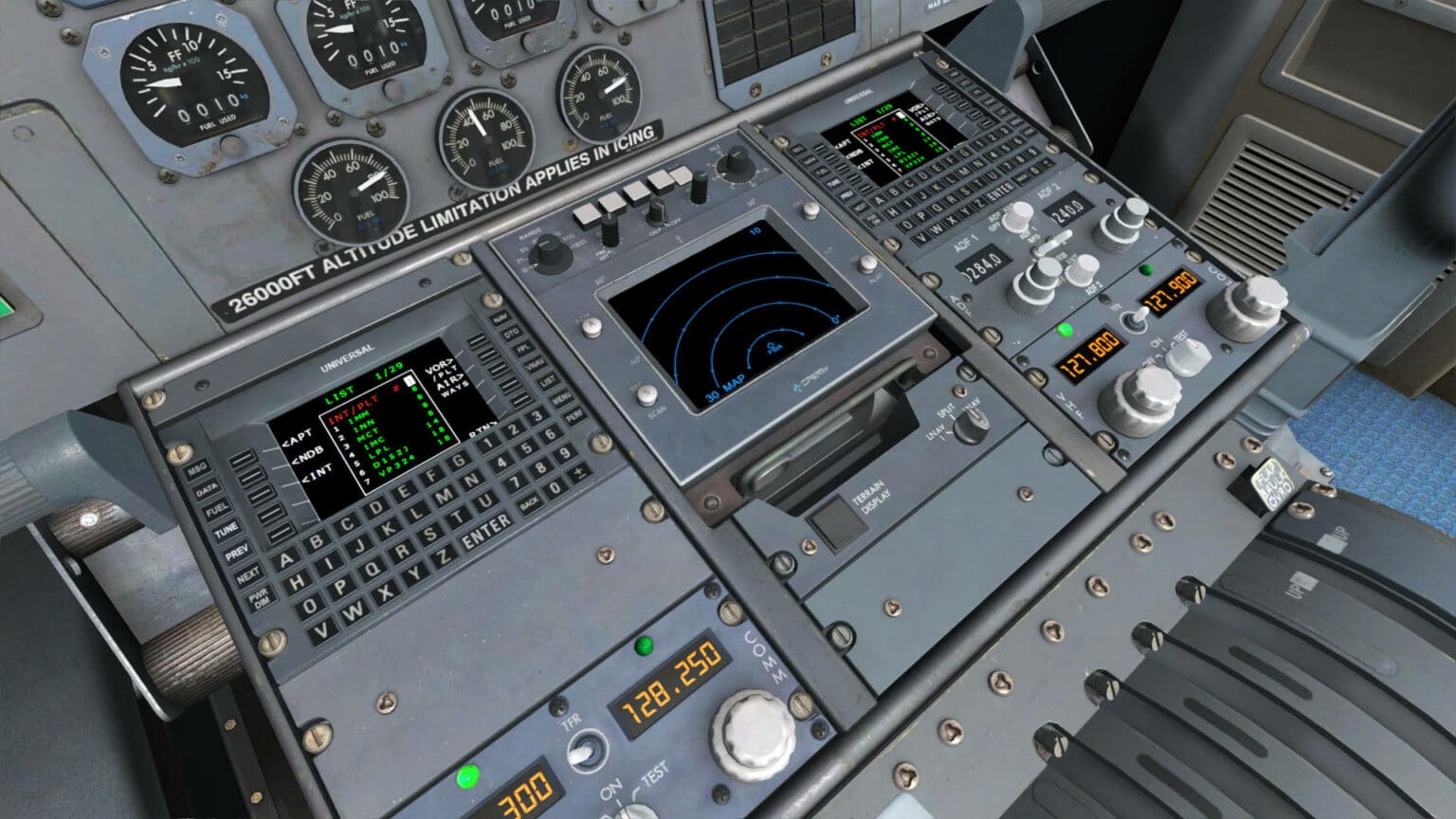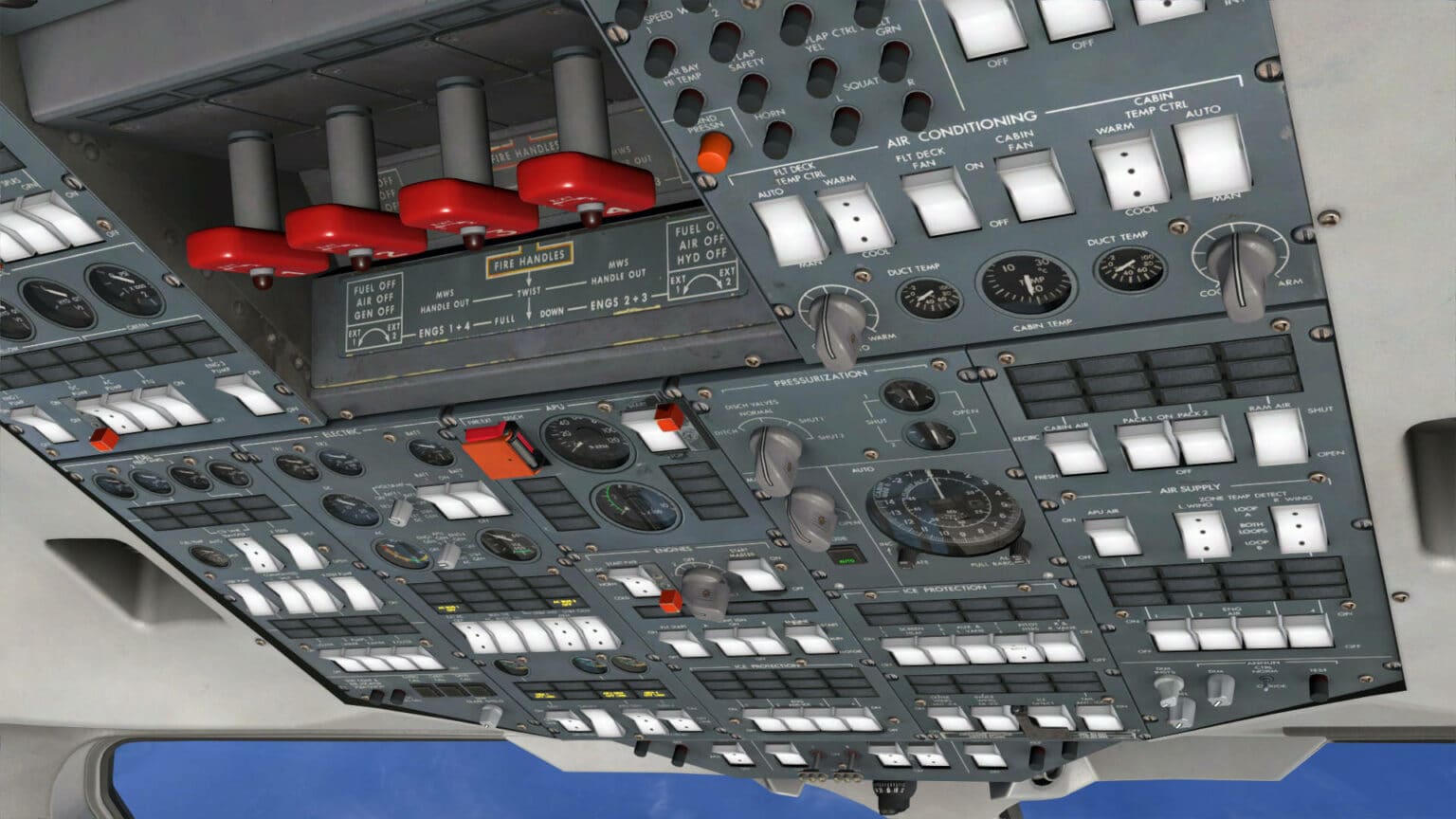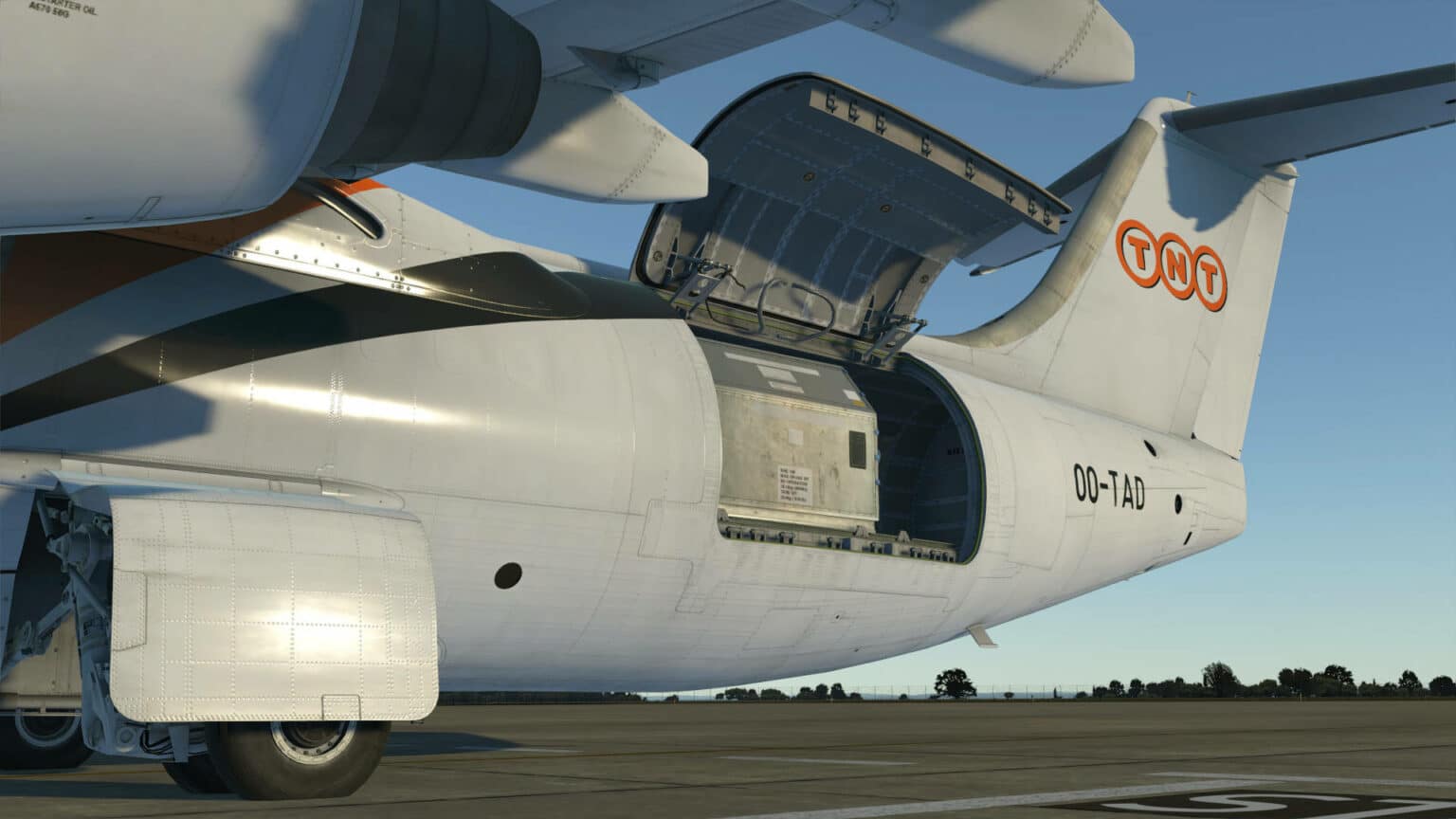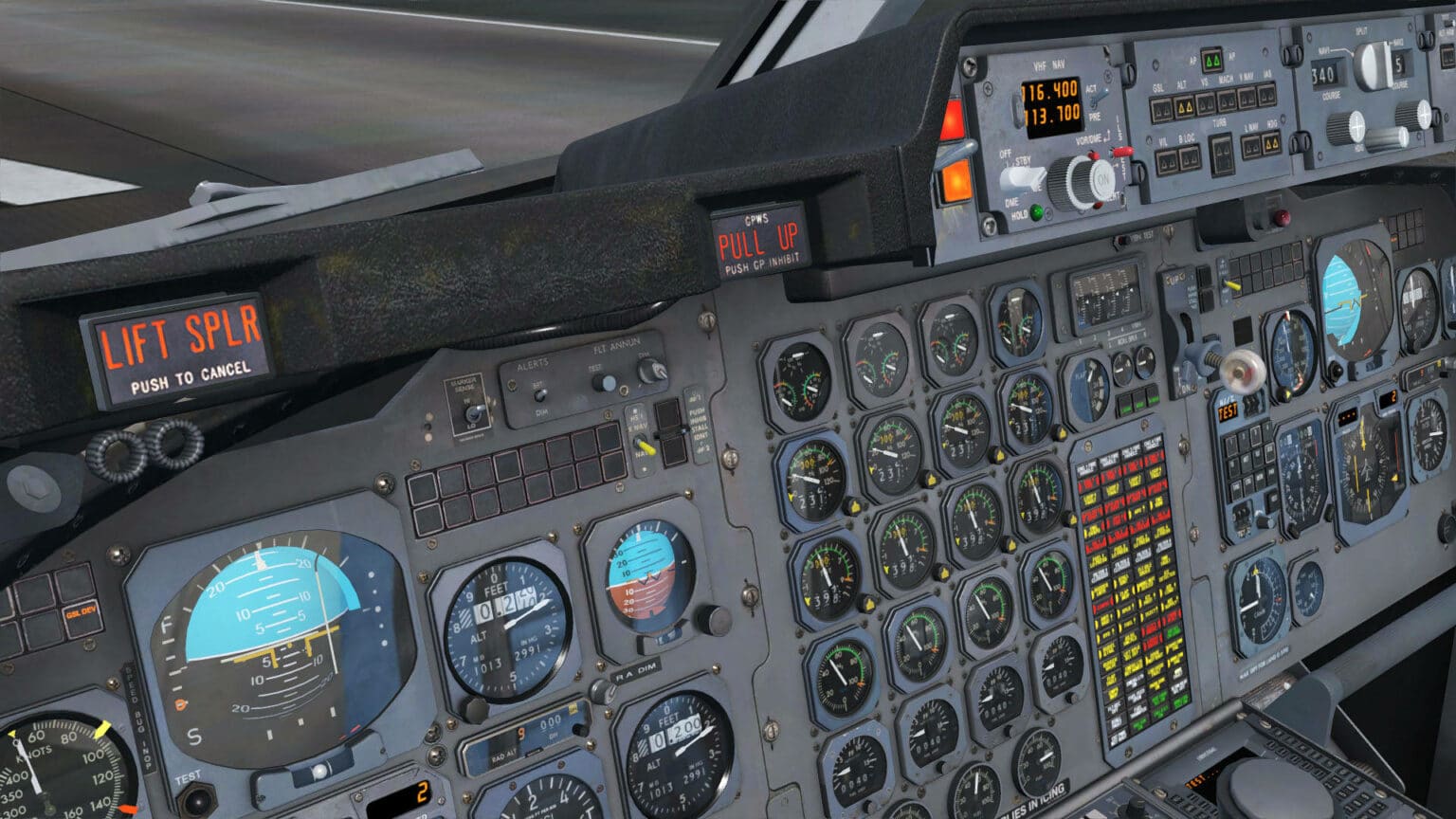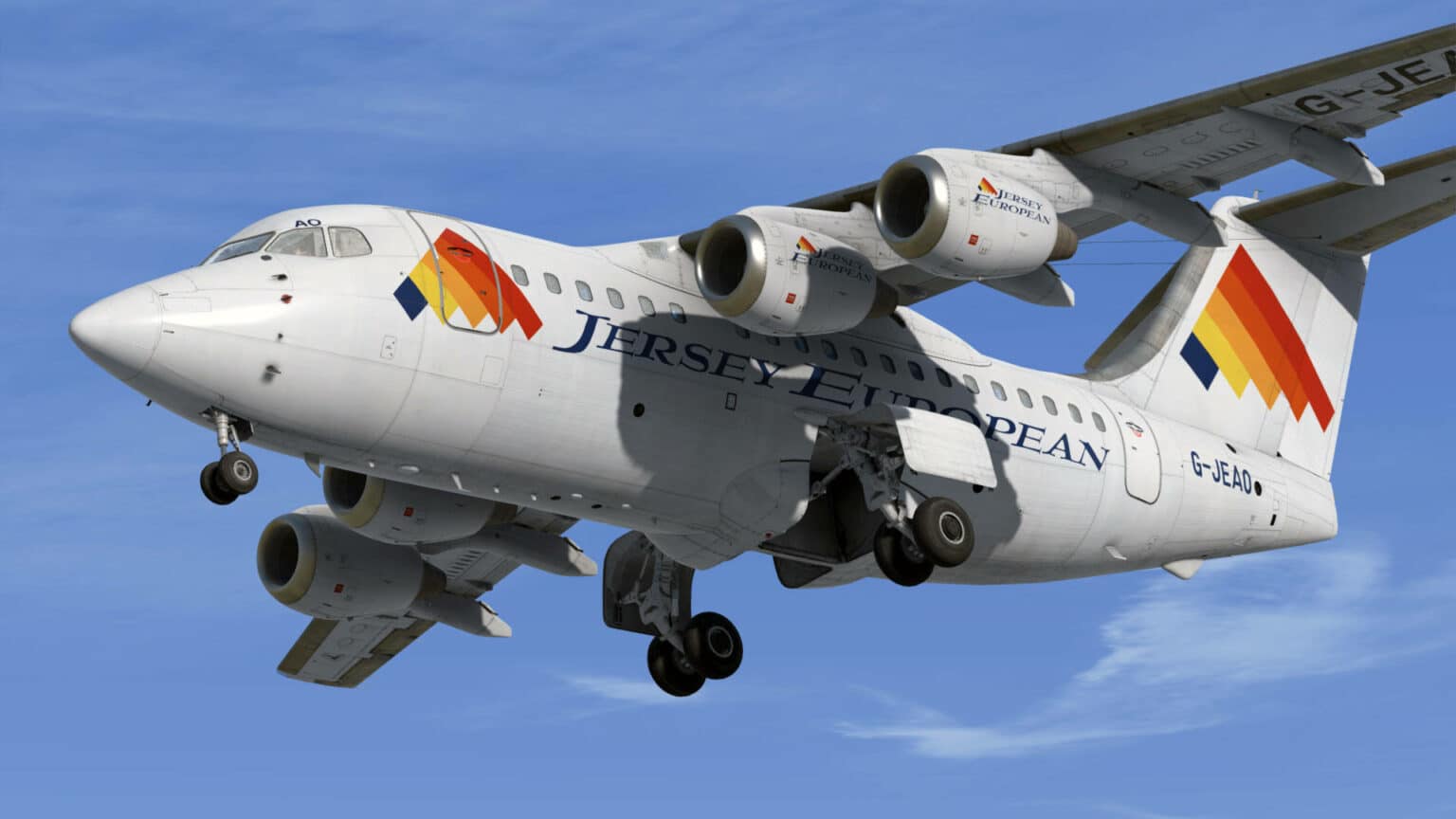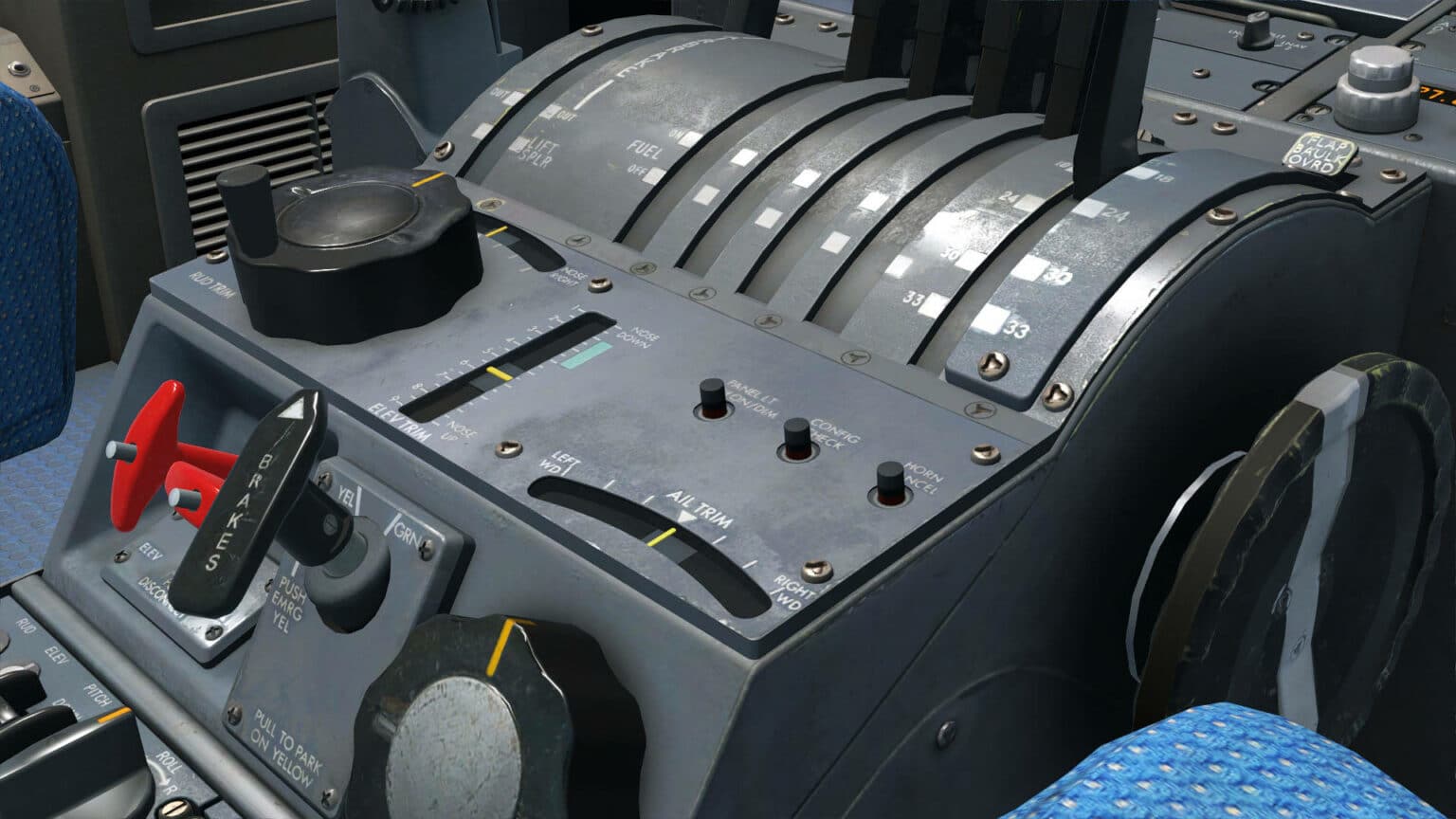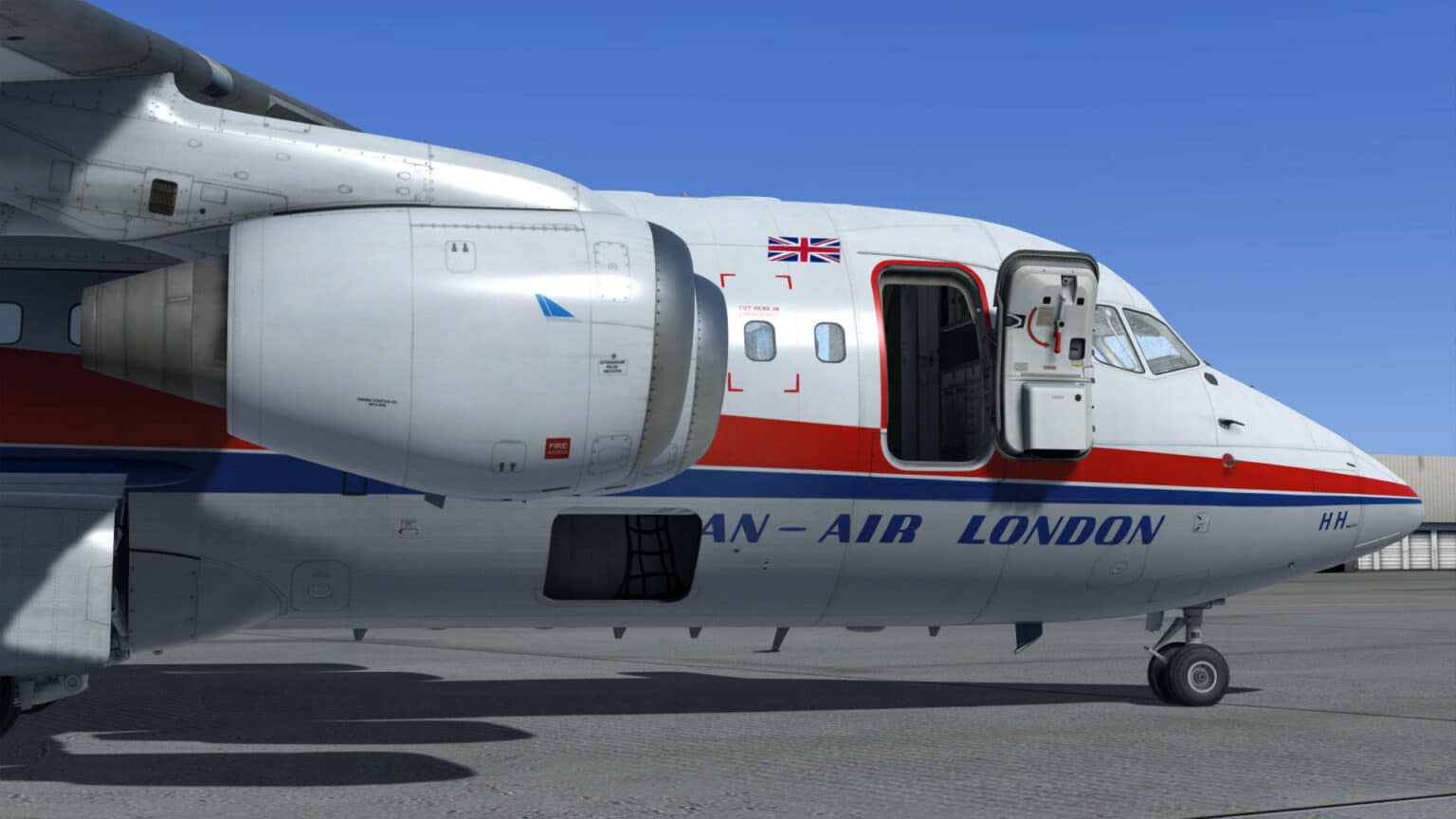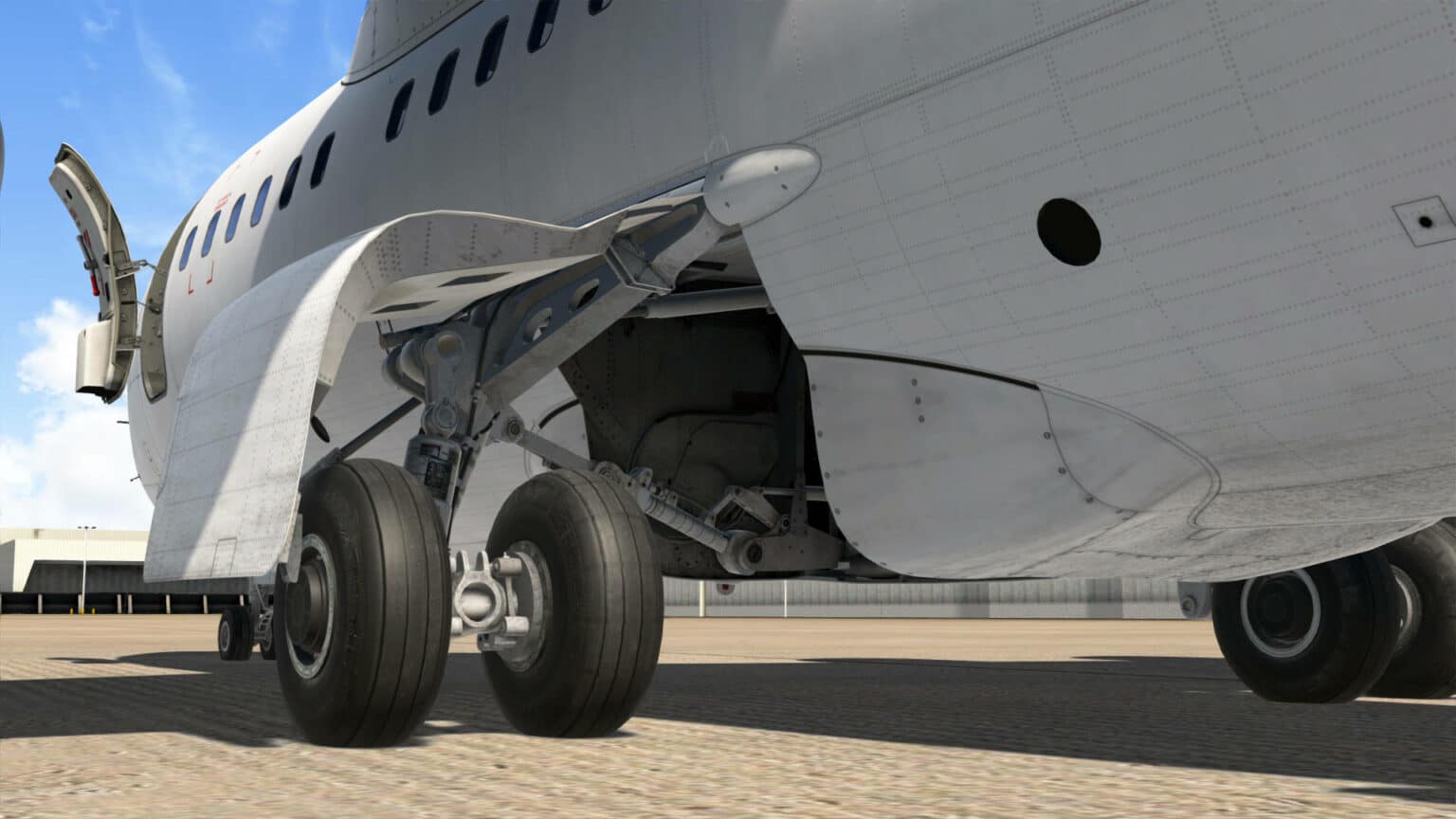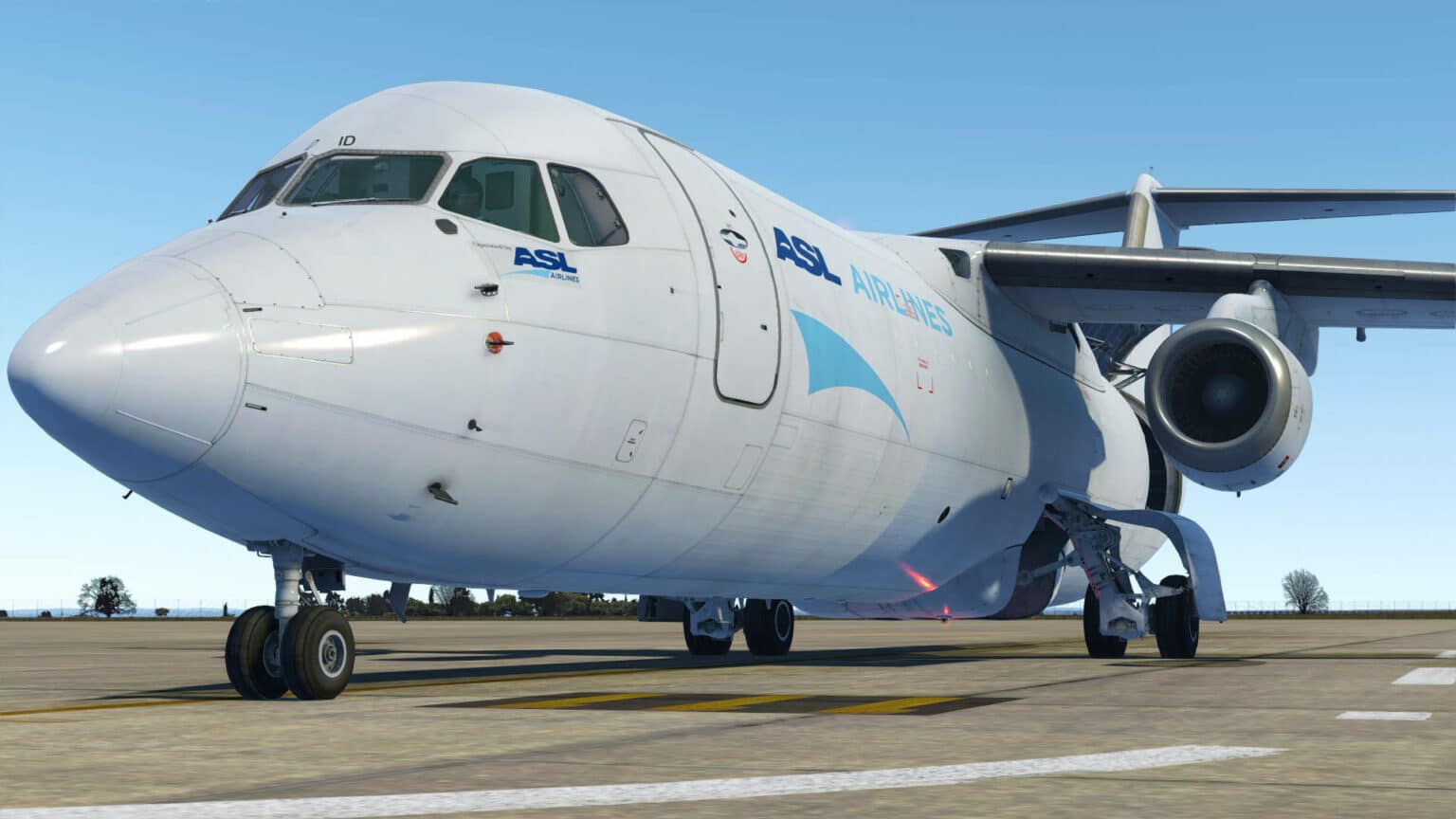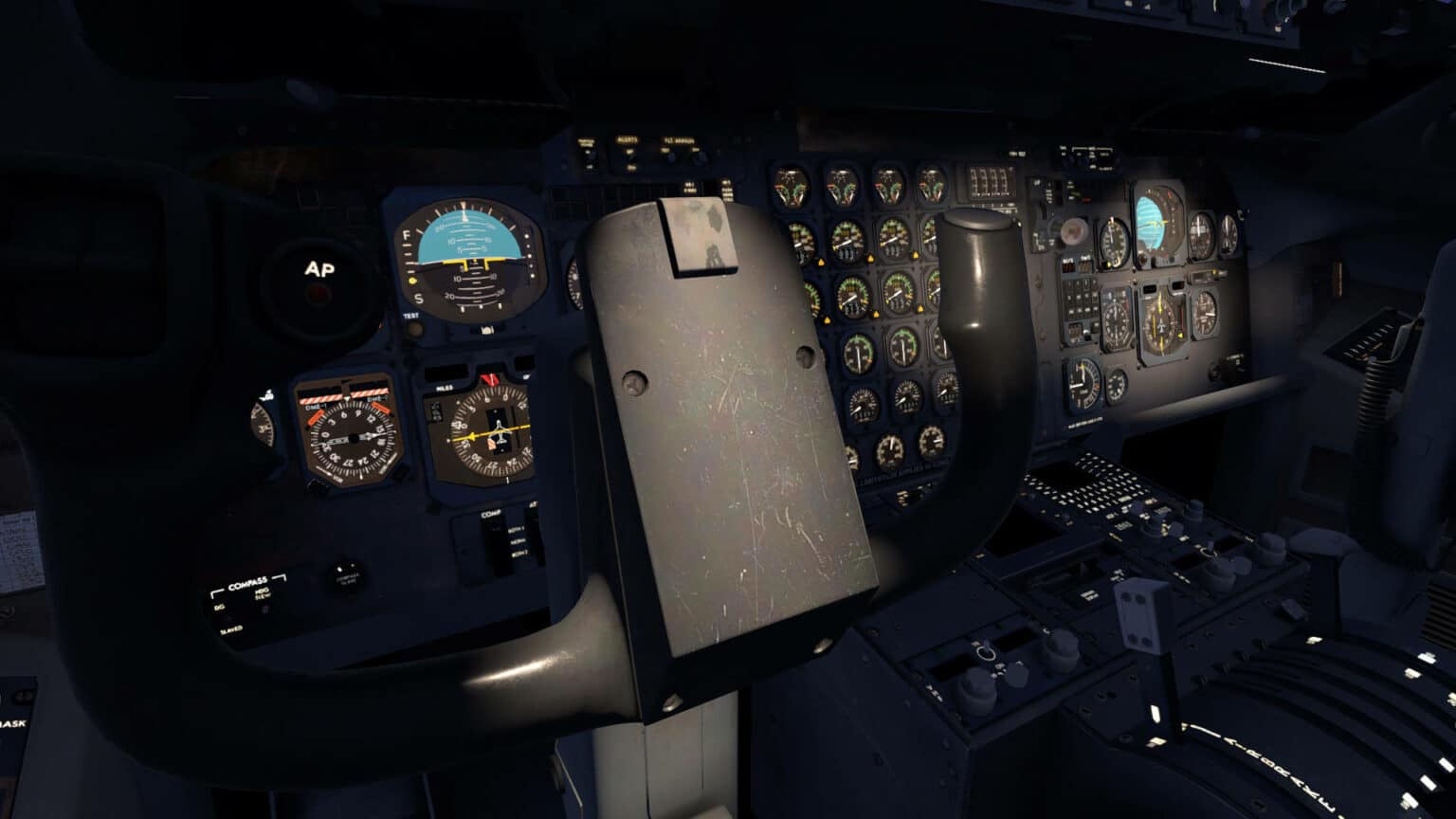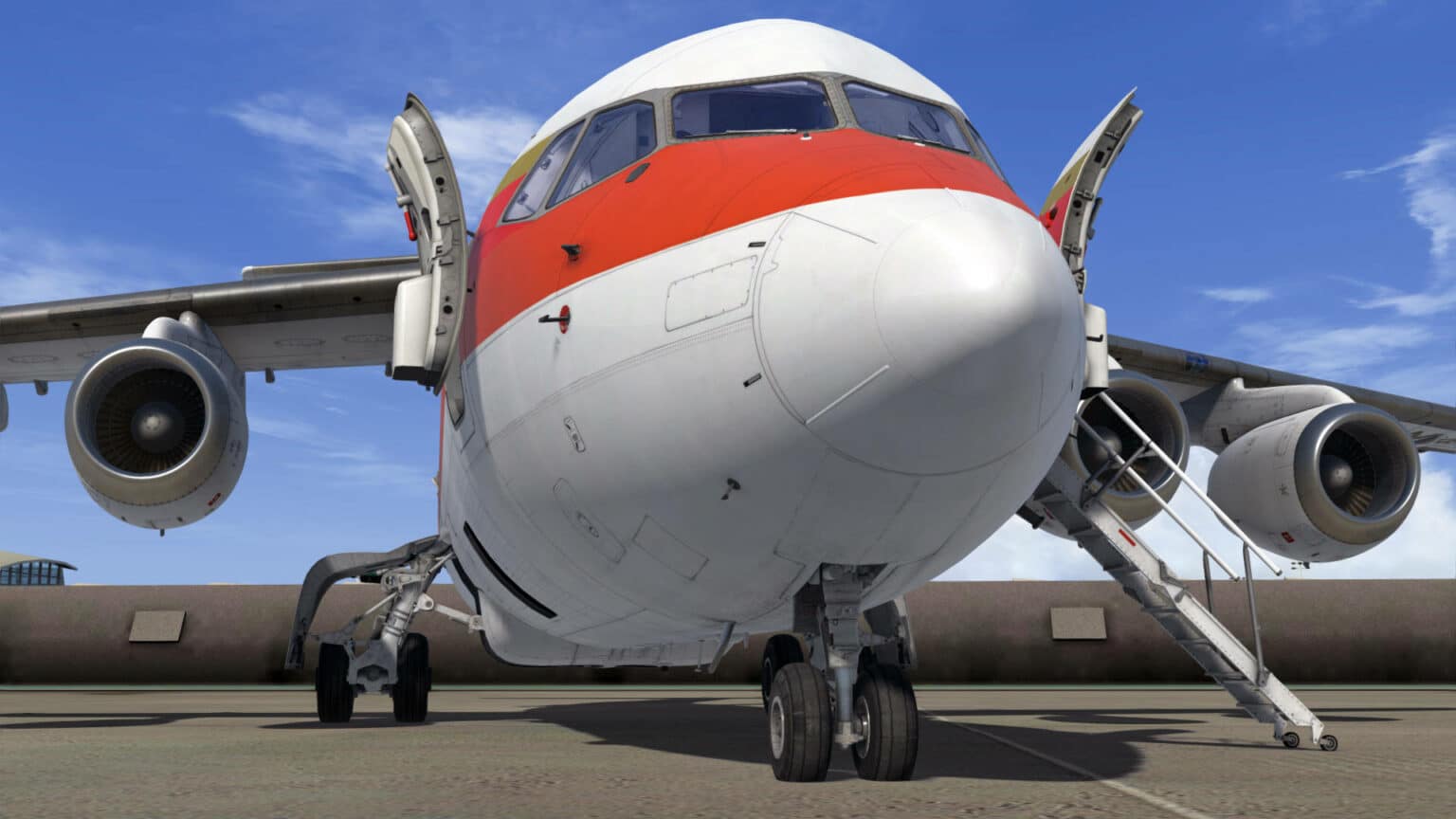Nach unzähligen Teasern hat Just Flight heute ihre Bae 146 Umsetzung, auch Jumbolino genannt, veröffentlicht. Für ca. 75€ kommt der kleine Vierstrahler in den heimischen P3D V4 und V5 und wird dort in der 100-300er Version und als Frachter euer Piloten-Können fordern. Neben einer neuen Beleuchtungs-Engine und über 450 eigenen Cockpitsounds, scheinen nahezu alle Systeme umgesetzt worden zu sein. Die Übersetzung aller Produktfeatures würden den Rahmen der News sprengen, daher haben wir sie einfach kopiert.
Teaser Videos
Features
MODEL
Eight variants of the 146 are included:
- – 146-100
- – 146-200
- – 146-300
- – 146-200 QC & QT (cargo)
- – 146-300 QT (cargo)
- – CC.Mk2 (RAF VIP configuration with countermeasure pods)
- – C.Mk3 (RAF cargo configuration with countermeasure pods)
- Accurately modelled using real-world aircraft plans and comprehensive photography of the real aircraft (G-JEAO, ZE701 and ZE708)
- Numerous animations including:
– Trailing edge flap surfaces
– Wing-mounted spoilers and tail-mounted airbrake
– All passenger, service and cargo doors
– Windscreen wipers
– Distinctive retractable tricycle landing gear
– Countermeasure pods, HF aerial and more - Physical Based Rendering (PBR) materials produce realistic metallic, plastic and glass surfaces (requires Prepar3D v4.4 and above)
- 4096×4096 textures are used to produce the highest possible texture clarity (optional 2048×2048 textures available via a switcher tool)
- Authentic labelling and placards based on those found in the real aircraft
COCKPIT
- Captain and First Officer positions are modelled with hundreds of functional switches, knobs and controls
- A truly 3D cockpit environment right down to accurately modelled seat belts and screw heads – every instrument is constructed fully in 3D with smooth animations
- Cockpit textures feature wear and tear based on reference photos taken in the real aircraft to produce an authentic environment
- Interactive checklists for every stage of flight
- Panel state system which will automatically save the panel state whenever a flight is saved and reload the panel state whenever that flight is loaded
- Aircraft configuration system that will allow you to choose between ‚cold & dark‘ or ‚ready for take-off‘
- Many features have been added to help with usability such as the ability to hide the control yokes for a better view of the instruments and pre-set angled views for the overhead panel, centre pedestal and jump seat
- Flight computer panel with useful information such as fuel burn, endurance, speed and wind speed/direction
LIVERIES
The 146 comes with a variety of airline liveries from the UK, USA, Australia, Europe and more. A Paint Kit is available to download from the Support section.
146-100
- Air France Express (G-JEAT)
- AirUK (G-UKPC)
- British Aerospace demonstrator (G-SSSH)
- Dan-Air London (G-BKMN)
- Formula One Flight Operations (G-OFOM)
- Jersey European (G-JEAO)
- Pacific Southwest Airlines (N246SS)
- United Express (N463AP)
146-200
- AirCal (N146AC)
- Air Canada Jazz (C-GRNZ)
- American Airlines (N699AA)
- Continental Express (N406XV)
- QantasLink (VH-NJJ)
- SN Brussels Airlines (OO-DJJ)
- USAir (N165US)
146-200QC
- TNT Airways (OO-TAZ)
- Titan Airways (G-ZAPK)
146-200QT
- TNT Airways 1990s (G-TNTA)
- Ansett Australia Airlines Cargo (VH-JJZ)
- Titan Airways (G-ZAPR)
146-300
- Aer Lingus (EI-CTO)
- Air New Zealand (ZK-NZN)
- Ansett Australia (VH-EWM)
- Astra Airlines (SX-DIZ)
- British Airways (G-OINV)
- Flybe (G-JEBC)
- KLM UK (G-UKAC)
146-300 QT
- ASL Airlines (EC-MID)
- Australian Air Express (VH-NJM)
- TNT Airways (OO-TAD)
CC.Mk2
- RAF Statesman modern (ZE701 – Queen’s Flight)
- RAF Statesman 1980s (ZE701 – Queen’s Flight)
C.Mk 3
- RAF (ZE708)
SYSTEMS
Custom-coded aircraft systems with a high degree of complexity and depth, including:
Air-conditioning and pressurisation system:
- Automatic and manual pressurisation modes with control of outflow valves, barometric and cabin rate settings, indications and cabin altitude warnings
- Cabin altitude and differential values based on real-world data
- Automatic and manual flight deck and cabin temperature control – takes account of ambient temperature, air supply from the engines and/or APU, fresh or recirculated air and even whether the doors are open!
Auto-flight system:
- Autopilot and flight director system with multiple modes:
- – Pitch – Altitude arm and hold, vertical speed, IAS, Mach, glideslope and go-around
– Roll – VLOC, BLOC, LNAV (FMC) and HDG
– Turbulence mode
– Pitch and bank selection and hold
– Sync mode for quick changes to aircraft attitude
– Fully functional mode annunciations, engagement and disengagement criteria (including roll and pitch rate cut-out and stall cut-out) and integration with ADI and HSI - Simulated CAT 2 approach monitoring system
Flight Management Computer:
- Custom-coded UNS-1 FMC for accurate navigation
- Navigraph database support for up-to-date AIRAC cycles
- Lateral navigation integration with LNAV autopilot mode and HSI
- Vertical navigation information for use with autopilot pitch modes
- Ability to create full flight plans with import and export functions
- SID and STAR support
- Fuel management, performance, radio tuning and more
Communication system:
- Dual VHF COMM, NAV and ADF radios
- Cockpit voice recorder test and indication systems
- Functioning audio selector and PA chime
Electrical system:
- Independent engine, APU and external power (AC and DC) sources
- Generator and TRU loading, and automatic load switching
- Standby generator and inverter power sources for non-normal procedures
- Independent AC channels, including normal, essential and emergency busbars, and bus-ties facilities
Fire protection system:
- Engine, APU and fuselage fire detection and warning systems
- Engine fire extinguishing system
- Fully simulated test functionality
Flight controls:
- Servo-tab simulation – elevator and aileron surfaces position is dependent on servo-tab control puts and air flow over the surface
- Iconic tail-mounted airbrakes, roll and lift spoilers with independent hydraulic sources, realistic deployment times and custom AC and PTU pump sounds
- Flight control disconnect and yoke control lock functionality
- Accurately simulated flap system with hydraulic and electrical power sources, baulk override, fault testing and iconic howl when deployed in the air
- Stall identification and warning systems, including stick shaker and pusher, and inhibit mode
- Simulated configuration warning system
Fuel system:
- Realistic fuel load and burn based on real-world data
- Simulated electrical normal and hydraulic standby fuel pumps, centre and wing tanks with feed tanks for each engine, and LP and HP fuel cocks
- Fully functional centre-to-wing fuel transfer, cross-feed and common-feed valves
Hydraulic system:
- Independent yellow and green hydraulic systems with realistic pressure, quantity and supply to other systems
- Simulated AC and DC-driven backup pumps and power transfer unit (PTU)
- Functional standby generator for supplying AC and DC electrical power in non-normal situations
Ice and rain protection system:
- Ice detection and accumulation simulation, anti-icing and de-icing functionality for exterior surfaces, warning systems for in-flight monitoring
- Simulation of separate inner and outer wing anti-icing, and windscreen overheating
Indicating and recording systems:
- A vast array of annunciators, including accurately simulated Master Warning System (MWS) with amber and red cautions, audible warnings and ground testing for all systems
- Flight Data Entry Panel (FDEP) for entering flight details (date, flight leg and number)
Landing gear:
- Normal and emergency gear extension, including gear down-lock override
- Gear configuration indication and warning systems
- Simulated brake accumulators supplied via the hydraulic power sources (yellow or green), anti-skid and brake temperature indicator with cooling down periods that are affected by ambient temperature, brake usage and brake fans
- Captain and First Officer tillers for realistic nose-wheel steering
Navigation systems:
- Transponder with TCAS (integrated with VSI TCAS display) and flight ID input functionality
- Dual RMI/DBI and HSI navigation instruments, fed by two NAV and ADF radios
- Instrument source selector for NAV 1, NAV 2 or dual navigation via the ADI, HSI and auto-flight system
- Choice of traditional or TCAS VSI
- Fully functioning test modes on navigation instruments (e.g. HSI, radio altimeter and ADI)
- Weather radar with Active Sky compatibility and map function (weather mode requires Active Sky for P3D)
- Custom-coded GPWS with modes 1-6, steep approach mode, flap warning override and test functionality
Oxygen system:
Flight crew and passenger oxygen systems with valve and mask deployment controls.
Pneumatic system:
Realistic bleed air demand from engines and APU, and pneumatic supply to air-conditioning and ice protection systems.
APU:
- Realistic APU start and shutdown procedures, and bleed air and electrical power supply
- RPM, TGT and fuel burn values based on real-world data
Doors and stairs:
- Animations panel for controlling passenger and service doors, lower cargo doors and fuselage cargo door (QT/QC only)
- Deployable airstairs, powered by AC hydraulic system
Powerplant:
- N1, N2, TGT, oil pressures and temperatures will all differ subtly between engines
- Accurately simulated Thrust Modulation System (TMS) with take-off (full or flexible), max continuous thrust, TGT and descent modes. Takes account of engine bleed air requirements e.g. for to air-conditioning and ice protection systems.
- Realistic engine start procedures with external, APU or cross-start sources
- Simulation of ground and flight idle baulks
- Take-off and landing speed card which automatically displays reference speeds depending on current aircraft weight, and settable airspeed indicator and engine instrument bugs
Lighting:
- Independent lighting controls for Captain and First Officer
- Dimmable integral lighting for each panel
- Dimmable dynamic flood and storm lighting for a highly immersive and customisable night environment (more than 10 individual light sources including entry, lap, sill and flight kit) – Prepar3D v5 only
- White and red flashlight for night operations – Prepar3D v5 only
- Accurately simulated exterior lighting including wing, logo and runway exit lights, and taxi/landing and navigation lights with different intensities
Sounds:
- Studio quality Lycoming ALF-502 engine noise recorded from RAF C.Mk3 ZE708
- Over 450 flight deck sound effects recorded from RAF CC.Mk2 ZE701
- Detailed equipment audio such as the APU, brake fans, electrical circuits, hydraulic equipment and many more
- Distinctive flap retraction/extension airflow ‚howling‘ sound
- Accurate 3D placement of sounds
FDE and effects:
- Realistic and accurate performance in the air and on the ground, using unique flight models for all variants based on real-world performance and handling data, and input from real-world 146 pilots.
- Custom effects for enhanced immersion, including engine exhaust, wing condensation, cruise contrail, and ground splash in wet/snowy conditions from all six landing gear wheels.
- Complete exterior lights package as seen on the real 146 including landing, wing, runway, logo and taxi lights that illuminate objects and the ground, for ease of operation during the hours of darkness.
Other features:
- Manual (245 pages) – tutorial, FMC guide, procedures, limitations and handling notes
- Payload manager for realistic fuel and passenger loads, with route entry for calculating required fuel
- Custom GSX profiles
- Multiple interior and exterior viewpoints, including wing views
- PSD paint kits included so you can create your own paint schemes

